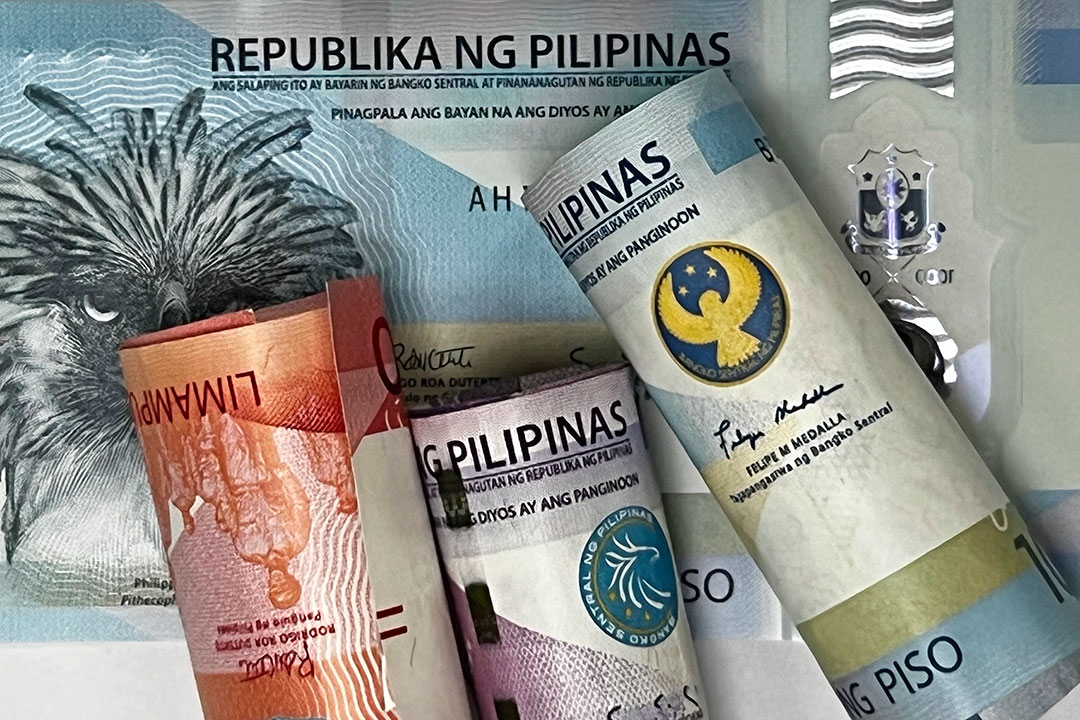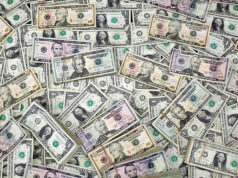Peso rises to new 4-month high as Fed minutes bolster cut bets

THE PESO appreciated to another over four-month high against the dollar on Thursday as minutes of the US Federal Reserve’s July policy meeting cemented market expectations of a September rate cut in the world’s largest economy.
The local unit closed at P56.333 per dollar on Thursday, strengthening by 16.7 centavos from its P56.50 finish on Wednesday, Bankers Association of the Philippines data showed.
This was the peso’s best finish in more than four months or since its P56.315-a-dollar close on April 2.
The peso opened Thursday’s session at P56.333 against the dollar, which was also its closing level. It traded stronger than its Wednesday close the entire session as its weakest showing was at just P56.38, while its intraday best was at P56.28 versus the greenback.
Dollars traded inched up to $1.589 billion on Thursday from $1.588 billion on Wednesday.
The peso strengthened on the back of the dovish tone of the minutes of the Federal Open Market Committee’s (FOMC) July meeting, a trader said in a phone interview.
“The market still traded mostly sideways a while ago since they are awaiting the Jackson Hole Symposium,” the trader added.
“The peso followed most major Asian currencies up versus the dollar. There was selling interest for the pair as the dollar weakened after the FOMC minutes showed more support for rate cuts,” Security Bank Corp. Chief Economist Robert Dan J. Roces said in a Viber message. “Any dovish tilt post-Jackson Hole Symposium should also weigh on the dollar further and strengthen the peso.
Philippine financial markets will be closed on Friday (Aug. 23) for a special nonworking holiday in observance of Ninoy Aquino Day, which was moved from the original Aug. 21 date.
The Federal Reserve appears to be very much on track for an interest rate cut in September after a “vast majority” of officials said such an action was likely, according to the minutes of the US central bank’s July 30-31 meeting, Reuters reported.
The minutes, which were released on Wednesday, even showed some policy makers would have been willing to reduce borrowing costs at last month’s gathering.
The policy-setting Federal Open Market Committee left its benchmark interest rate unchanged in the 5.25%-5.5% range on July 31, but opened the door to a cut at the Sept. 17-18 meeting.
Financial markets have been expecting the September meeting to kick off the Fed’s policy easing, with as much as a full percentage point worth of rate cuts expected by the end of this year.
At the July meeting, most policy makers thought that “if the data continued to come in about as expected, it would likely be appropriate to ease policy at the next meeting,” the minutes said.
They also noted “many” Fed officials viewed the stance of rates to be restrictive and “a few participants” contended that amid an ongoing cooling in inflationary pressures, no change in rates would mean that monetary policy would increase the drag on economic activity.
While all Fed officials were on board with keeping rates steady in July, the minutes revealed that “several” policy makers said progress in lowering inflation amid a rise in joblessness “had provided a plausible case” for a quarter-percentage-point cut in July, “or that they could have supported such a decision” had it been on the table.
The minutes also showed that a dwindling camp of policy makers feared a premature easing in monetary policy could restart inflation.
With the Fed letting the data determine what happens with rates, central bank watchers are already contemplating the future scope of cuts and whether aggressive action is needed at the onset of the easing cycle.
Fed Chair Jerome H. Powell largely tipped off the likely outlook after the July policy meeting when he said “if we do get the data that we… hope we get, then a reduction in our policy rate could be on the table at the September meeting.”
Markets are likely to get an update of Mr. Powell’s views on Friday when he speaks at the Kansas City Fed’s annual research conference in Jackson Hole, Wyoming. A number of other Fed officials are also likely to weigh in on the outlook while attending the conference. — A.M.C. Sy with Reuters



